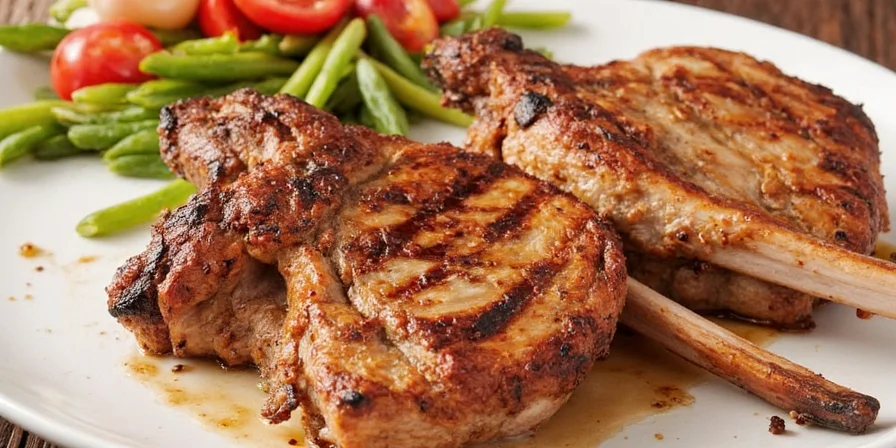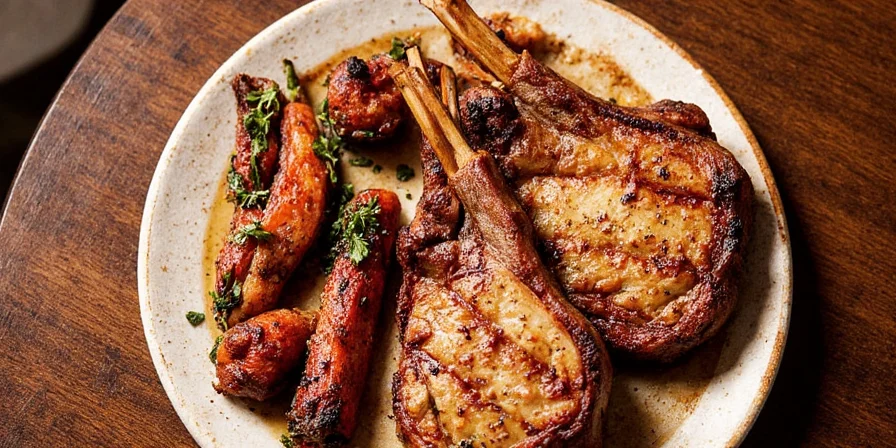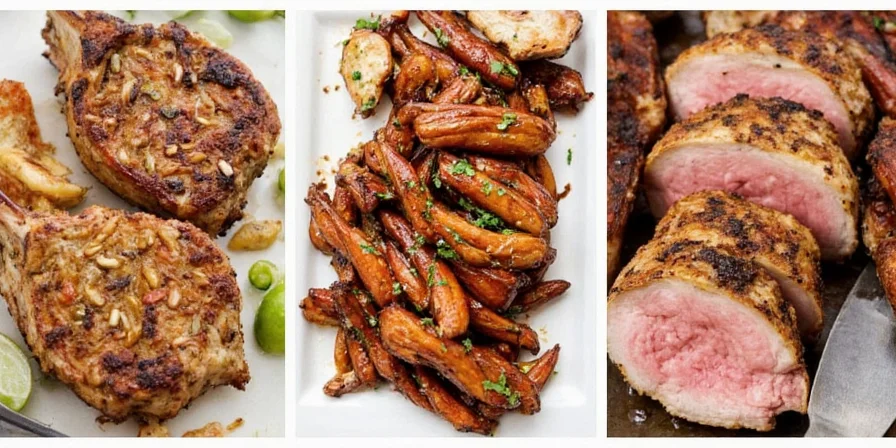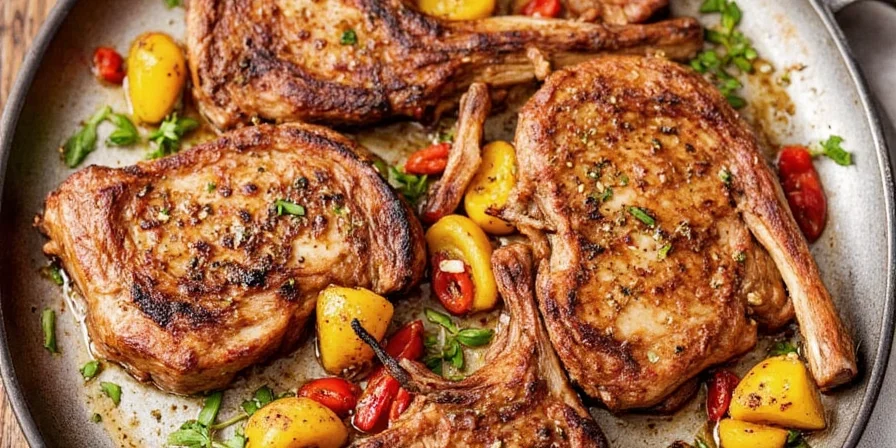This guide delivers actionable spice innovation for home grill enthusiasts seeking to transcend basic seasoning routines. Designed specifically for intermediate cooks with foundational grilling skills, it provides scientifically-informed flavor pairings that transform ordinary pork chops into extraordinary culinary experiences through precise flavor chemistry insights.
Table of Contents
- Why Spice Matters
- The Flavor Science Behind Pork and Spices
- Classic Combinations: A Solid Foundation
- Top 10 Innovative Spice Pairings for Grilled Pork Chops
- How to Use These Spices Like a Pro
- Bonus Tips for Perfect Grilled Pork Chops
- Frequently Asked Questions
- Conclusion: Let Your Inner Spice Master Shine
Why Spice Matters
Effective spice application triggers neurological reward pathways while interacting with pork's unique fat composition. The right blends don't just mask flavors—they create new taste compounds through Maillard reactions during grilling, fundamentally altering the sensory experience beyond basic seasoning.

The Flavor Science Behind Pork and Spices
Pork's high fat content acts as a solvent for lipophilic flavor compounds, making it uniquely receptive to spice penetration. Understanding volatile compound interactions explains why certain pairings excel: cumin's earthy thujone complements pork's fatty acids, while citrus zest terpenes cut through richness. This molecular perspective moves beyond traditional pairing rules to create intentional flavor layering.
Classic Combinations: A Solid Foundation
Before exploring innovative blends, recognize these proven foundations that establish baseline flavor profiles:
- Garlic + Rosemary (umami enhancement)
- Paprika + Brown Sugar (caramelization catalysts)
- Cumin + Chili Powder (smoke compound synergy)
- Thyme + Sage (herbal top notes)
These work reliably but represent surface-level exploration. True innovation requires understanding why they function before advancing.
Top 10 Innovative Spice Pairings for Grilled Pork Chops
These scientifically-optimized combinations leverage flavor chemistry principles for transformative results. Each pairing addresses specific sensory dimensions beyond conventional approaches:
| # | Spice Pairing | Flavor Chemistry | Application Insight |
|---|---|---|---|
| 1 | Cumin + Lime Zest | Thujone-citral interaction | Rub into scored fat cap for deep penetration |
| 2 | Smoked Paprika + Maple Sugar | Guaiacol-sucrose Maillard boost | Apply during final 3 minutes for glaze effect |
| 3 | Turmeric + Black Pepper + Coriander | Piperine-curcumin bioavailability | Marinate minimum 2 hours for full activation |
| 4 | Fennel Seeds + Orange Zest | Anethole-limonene synergy | Toast seeds first to release volatile compounds |
| 5 | Ancho Chili Powder + Cocoa Powder | Capasicin-theobromine balance | Use 3:1 ratio to prevent bitterness |
| 6 | Garam Masala + Cinnamon | Eugenol-cinnamaldehyde layering | Add cinnamon post-grill for aromatic finish |
| 7 | Lemon Pepper + Dill | Citric acid-terpene freshness | Best for leaner chops to maintain moisture |
| 8 | Sumac + Za'atar | Malic acid-thyme phenol interaction | Apply as finishing rub after resting |
| 9 | Basil + Lemon Verbena | Linalool-citral top notes | Use fresh herbs for volatile compound retention |
| 10 | Cardamom + Ginger | 1,8-cineole-gingerol warmth | Grind cardamom seeds fresh for maximum potency |
How to Use These Spices Like a Pro
Maximize flavor impact through precise application techniques:
- Dry Rubs: Combine spices with 10% neutral oil by weight. Refrigerate chops with rub for 2-4 hours to allow compound diffusion into meat fibers.
- Marinades: Use acidic components (citrus, vinegar) at 5-8% concentration. Higher concentrations break down proteins excessively, causing mushiness.
- Toasting Spices: Heat whole spices to 150°C (302°F) for 90 seconds—this optimizes volatile compound release without scorching.
- Layering Flavors: Apply base rub 4 hours pre-grill, finish with fresh herb-infused oil during last 2 minutes for volatile compound retention.

Bonus Tips for Perfect Grilled Pork Chops
- Temperature Control: Remove chops at 135°F (57°C) for medium-rare; they'll reach USDA-recommended 145°F (63°C) during 5-minute rest.
- Resting Protocol: Tent loosely with foil for 5 minutes—complete sealing causes steam buildup that degrades crust texture.
- Meat Selection: Choose 1.5-inch thick, bone-in chops with visible marbling for optimal fat-spice interaction.
- Grill Management: Maintain 375-400°F (190-204°C) zone. Sear 2 minutes per side, then move to indirect heat for completion.
- Flavor Calibration: Adjust heat levels by blending 3 parts mild spice with 1 part hot component (e.g., paprika to cayenne).
Frequently Asked Questions
How long should pork chops rest after grilling?
Five minutes is optimal. Resting longer than 10 minutes causes surface temperature to drop below 140°F (60°C), where bacterial growth accelerates. The foil tent should be loose to maintain crust integrity while allowing carryover cooking.
Can I substitute dried herbs for fresh in these blends?
Dried herbs work best in rubs applied pre-grill (1:3 dried-to-fresh ratio). For finishing blends like basil-verbena, fresh is essential—drying destroys the volatile terpenes responsible for aromatic complexity. Freeze-dried herbs offer a middle ground for some applications.
Why does black pepper boost turmeric's effectiveness?
Piperine in black pepper inhibits hepatic glucuronidation, increasing curcumin bioavailability by up to 2000%. This biochemical interaction means turmeric's earthy notes become more pronounced while delivering greater functional benefits.
How do I prevent spice burning on the grill?
Sugar-containing blends (like maple-paprika) require indirect heat application. Create a two-zone fire: sear over direct heat, then move to indirect zone for spice-infused finishing. Maintain grill grates at 400°F (204°C) maximum for sugar-based rubs.
Conclusion: Let Your Inner Spice Master Shine
These scientifically-grounded pairings move beyond traditional seasoning by leveraging molecular interactions between pork's composition and spice compounds. By understanding the chemistry behind each blend—whether it's piperine enhancing curcumin or guaiacol boosting Maillard reactions—you transform grilling from casual cooking into precise flavor engineering. The most memorable meals emerge not from random experimentation, but from intentional application of these principles.

Final Implementation Strategy
Start with the cumin-lime pairing for immediate impact, then systematically explore other combinations while noting how each chemical interaction affects your palate. Track variables like resting time and grill temperature to refine your approach. Remember: the ultimate goal isn't just flavorful pork, but developing a deeper understanding of how ingredients interact—knowledge that elevates every future culinary creation.











 浙公网安备
33010002000092号
浙公网安备
33010002000092号 浙B2-20120091-4
浙B2-20120091-4